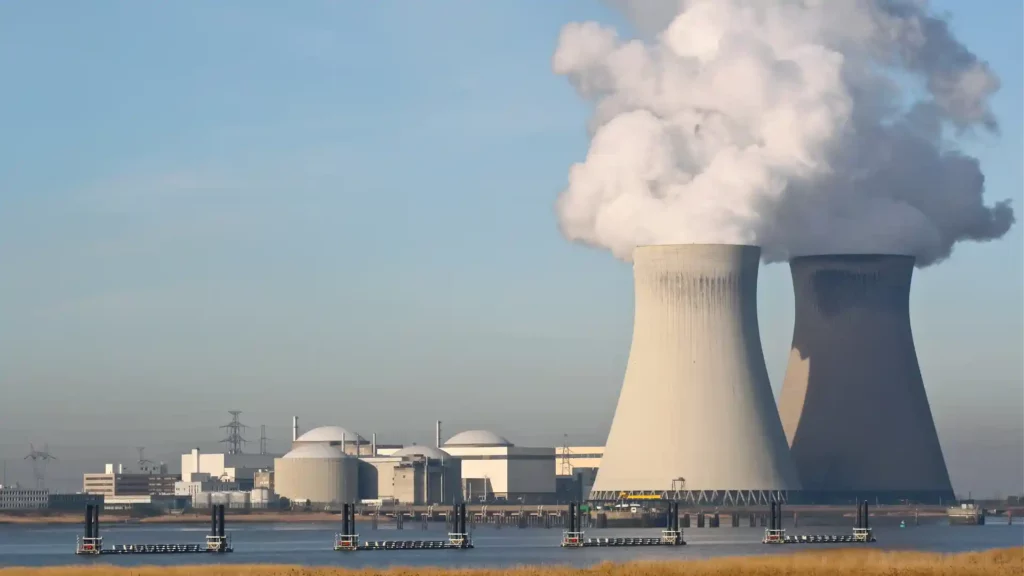Restarting the plant will help Japan’s government, which is trying hard to increase nuclear power generation.
Japan’s government is working hard to get approval to restart the biggest nuclear power plant in the world. They want to restart many such reactors that are currently not in use.
The minister of Economy, Trade, and Industry, Ken Saito, will ask Niigata Governor Hideyo Hanazumi next week to agree to restart the Tokyo Electric Power Co’s Kashiwazaki- Kariwa nuclear power station. This is one of the final steps before the plant can start operating again.
Tepco’s stock went up by 11% on Friday because of this news. If the reactors at the plant start working again, Tepco won’t have to buy as much expensive fossil fuels.
Restarting the plant will help Japan’s government, which is trying hard to increase nuclear power generation. However, they are facing challenges because of strict rules and not enough support from local communities. In December, the Nuclear Regulation Authority(NRA) allowed the Kashiwazaki- Kariwa plant to restart after fixing many safety problems.
The International Atomic Energy Agency has promised to help with technical support for the plant. They will send experts to help Tepco gain the trust of the public.
Kashiwazaki-Kariwa has seven reactors with a total capacity of 8.2 gigawatts. It is located 250 kilometers north of Tokyo. In 2017, Japan’s regulator said that two of the reactors met all the safety standards set after the Fukushima disaster.
In a separate case, A Japanese court decided on Friday that a nuclear reactor in central Japan can keep running. The reactor called the No.3 unit of Kansai Electric Power’s Mihama power plant, has been operating for over 40 years.
Residents from Fukui, Shiga, and Kyoto prefectures wanted the reactor to be shut down because they were worried about its safety. They said it might not withstand a big earthquake because it’s near a fault line. They also said that the evacuation plans in case of an earthquake were not good enough.
However, the court decided that the reactor was safe and could keep running. It passed all the safety checks by the NRA. The reactor started operating in 1976, and it was the first one to operate for more than 40 years under the new rules. These rules allow reactors to keep running for up to 60 years if they pass all safety checks.
Japan used to get 30% of its electricity from nuclear reactors and wanted to increase that to 40
%. But after the Fukushima Daiichi Nuclear disaster in 2011, things changed. This disaster was the worst such accident since Chornobyl in 1986. It forced 50,000 families to leave their homes because of radiation in the air, soil, and sea.
Although Japan’s reactors survived the Tohoku earthquake, the Tsunami that followed caused problems at the Fukushima Nuclear Power plant. This led to Japan’s first-ever nuclear emergency.
After the Disaster, all of Japan’s plants either closed or stopped working for safety checks. By May 2012, all 54 of Japan’s reactors were offline., and the country had no nuclear-generated electricity for the first time in over 40 years.
The Fukushima disaster made many people in Japan oppose such power plants. At first, over 80% of Japanese people were against and didn’t trust the government’s information about radiation. But ten years later, in March 2021, only 11% wanted to stop using nuclear energy immediately. Nearly half of the people wanted to gradually stop using it.
In October 2011, Japan managed to get through the summer without big power outages, but it raised concerns about meeting its goal of reducing carbon emissions. A government report admitted that people no longer trusted nuclear [power and said Japan needed to rely less on it.
Despite these challenges, Japan is still trying to restart some of its nuclear reactors while also focusing on finding alternative sources of energy.
